
|   |

|   |
Second edition of Samarpan - Satish Suri e-mail: satishism@yahoo.co.in February 9, 2015 Samarpan is an initiative of Nrityaangan, the dance school run by Radhika Shetty, to promote cultural integration across all genres in the performing arts. The two day festival held on the 17th and 18th January at the Don Bosco Hall in Mangalore highlighted several artists. 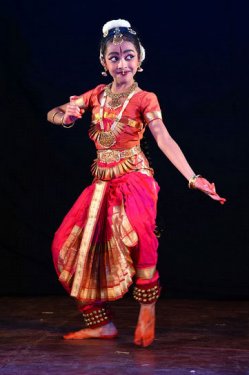 Trisha Rai 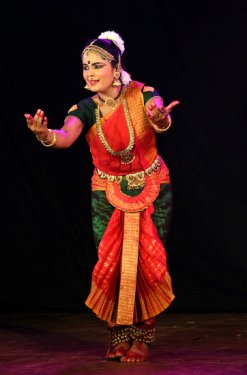 Chaitra Perdoor The inaugural item was by an upcoming student of Nrityaangan, Trisha Rai, who gave a spirited performance for Purandaradasa’s “Gajavadana beduve.’ Chaitra Perdoor, a senior artist from Udupi, showcased her skills of nritta and abhinaya in the varnam “Mohamana en meedu ne inda velayil modi seyyalamo en sami.” Accompanied by a live orchestra the artist demonstrated her technical prowess with leaps and jumps characterised by youthful vitality which attracted the attention of the audience. The music ensemble led by Guru Pravitha Ashok on the nattuvangam, Preethikala on the vocals, Balachandra Bhagawat on the mridangam, Nitish Ammannaya on the flute and Sharmila on the violin, added vibrancy and value to the presentation. 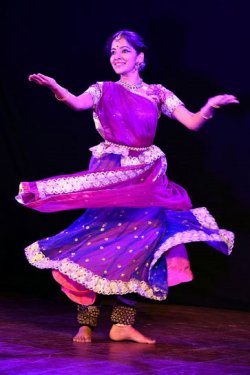 Mridula Rao This was followed by a Kathak performance by Mridula Rao, who has honed her skills under Nirupama and Rajendra, the noted duo from Bangalore. Opening with a Krishna Vandana she presented a pure dance in teen taal following it up with a thumri which had elements of abhinaya. The taraana in teen taal and raag Darbari, a choreographic composition of Guru Maya Rao, showcased beauty and joy in the nritta. She concluded with a prayer for peace, a composition sung by the noted playback singer S.P. Balasubramaniam.  Gayatri Sriram
Gayathri Sriram from Singapore presented a thematic performance of a devotee’s journey of liberation from bhakti to mukhti. The opening sequence was a homage to Surya, the harbinger of light, the dispeller of ignorance and darkness and the one who brings prosperity. It was performed with a lot of vitality and technical virtuosity. The varnam, a composition of the singer Balasubrahmanya Sharma, showcased Krishna as the embodiment of shringara. “Shringhara Lola Gopi Manohara” describes Krishna as the parama purusha, the one who is in the heart of every being, the guiding light to the Pandavas, and the one who saved the modesty of Draupadi. The dancer displayed competence in both nritta and interpretative passages projecting a feel for rhythm and sahitya. Krishna’s friendship with Kuchela, his response to the cry for help from Draupadi and his Gitopadesam to Arjuna were sensitively explored interspersed with jathis ornamenting the narration. The support from mridangam artist Gurumurthy who composed the jathis, was commendable. She followed it up with a ashtapadi “Kuru yadu nandana” and concluded with a Meera bhajan where the bhakti of the devotee transforms into mukhti. She was ably supported by her Guru Minal Prabhu on the nattuvangam, Balasubrahmanya Sharma on the vocals, Gurumurthy on the mridangam, K. Jayaram on the flute and Prasanna on the khanjira and morsing. Murugan on the lights provided the enhanced effects. The day two of the festival opened with the two sisters Artha and Ayana Perla from Udupi. Beginning with a Ganapathi Kautvam, they showed their strength of dedication and training in the art. The Alarippu and Shiva Stuthi performed by Ayana Perla sparkled with vitality and vigour. It was the turn of Artha Perla to explore a javali “Nodhi dakshanave” where a gopi expresses her love for Krishna. The final piece presented by the duo, a thodaya mangalam “Amba Jaya Janani” in Ragamalika and Taalamalika showed their ability to synchronise well with the rhythmic patterns composed by Prasanna Kumar and the music composition of D. Srivatsa.  Artha Perla 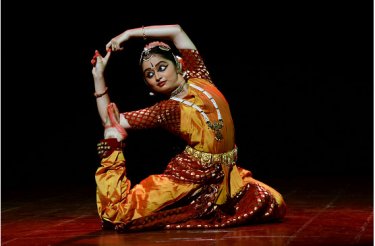 Ayana Perla  Aishwarya Balasubramanian 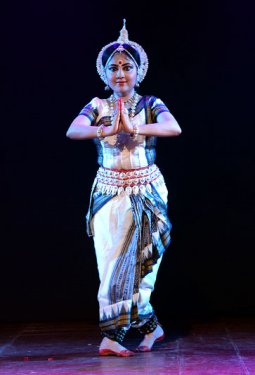 Sanchita Bannerjee With her histrionic abilities, admirable skill and poise, Aishwarya Balasubramanian was the next to take the stage. She commenced with a pushpanjali. The padam “Chitike vesithe’ by Sarangapani depicted the heroine full of pride who does not respond to the pleas of Venugopala. Captivating teermanams and delightful sancharis heralded this presentation. The Shiva Stuthi, showing Shiva in his several magnificent forms was marked by deft footwork, lucid expressions and grace. “Tumak chalath Ramachandra” showed the faltering steps of little Rama and he being adored by the queens of Dasaratha who are mesmerised by his looks, the sight of which brings great joy to Tulsidas. Her delineation marked the innocence of the little Rama and the motherly affection of the queens. She concluded with a taraana in teen taal and Darbari Kanaada, the rhythmic structure of the bandishes adapted and choreographed to synergise with the rhythmic symbols of the Bharatnatyam format to provide a new feel and verve to the presentation. This was followed by a Marathi abhang in praise of Maruthi. Sanchita Bannerjee’s Odissi was in sharp contrast to the earlier dance forms presented. She started with the traditional Mangalacharan with simple aesthetic nritta sequences. The ashtapadi ‘Rathi sukhasaare” had a lyrical quality with many swara interludes and nritta passages showing the sakhi exhorting Radha to go to the bower on the banks of the Yamuna immediately as Krishna awaits her. The elaborate choreography and anxiety of anticipation of Krishna were executed with grace and felicity. The artist concluded with an Oriya song “Radha rani songe nache murali paani.” Set against the backdrop of the Holi festival, the delineation captured the poet’s flavour and was marked by vibrant colour and tone to the moods of Radha and Krishna. 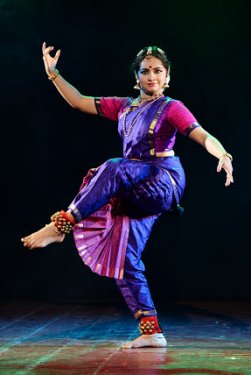 Uma Govind
The gratifying aspect of the festival was the time sense and the fact that the audience consisted mostly of dancers and dance gurus which augurs well for the dance fraternity. Bangalore based Satish Suri is an avid dance rasika besides being a life member of the Music and Arts Society. |